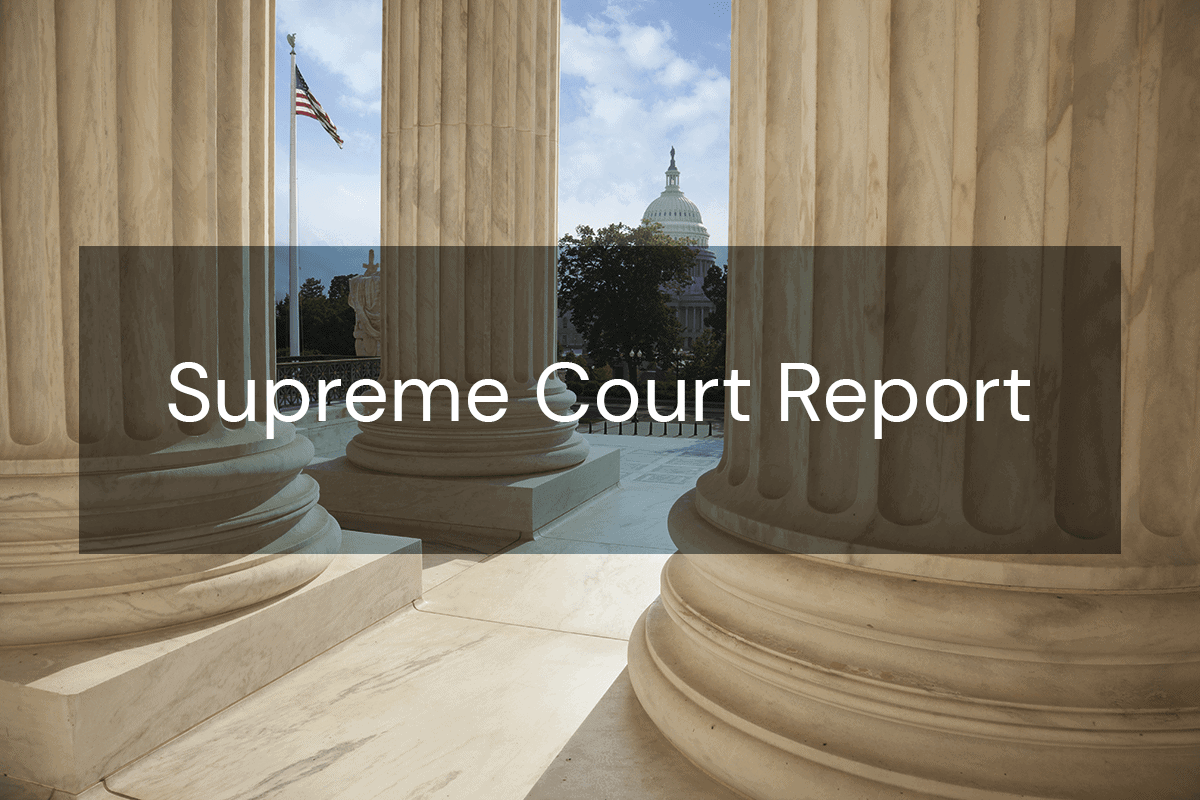-
 Director, Center for Supreme Court AdvocacyNational Association of Attorneys General
Director, Center for Supreme Court AdvocacyNational Association of Attorneys General

May 9, 2024 | Volume 31, Issue 11
This Report summarizes cases granted review on April 19 and 26, 2024 (Part I).
Case Granted Review
Garland v. VanDerStok, 23-852.
This case involves the federal government’s attempted regulation of “firearms parts kits,” otherwise known as “ghost guns.” The Gun Control Act of 1986 (Act) imposes various licensing, background-check, recordkeeping, and serialization requirements on individuals engaged in the business of importing, manufacturing, or dealing in firearms. The Act defines a “firearm” as “any weapon (including a starter gun) which will or is designed to or may readily be converted to expel a projectile by the action of an explosive,” in addition to “the frame or receiver of any such weapon.” 18 U.S.C. §921(a)(3)(A) and (B). The Act does not, however, define either a “frame” or a “receiver.” Recently, there has been a dramatic increase in crimes involving ghost guns, which are almost impossible to trace because they lack serial numbers and transfer records. As a result, in 2022 the Bureau of Alcohol, Tobacco, Firearms and Explosives issued a rule pertaining to the definitions of “firearm” and “frame or receiver” in the Act. 27 C.F.R. 478.11, 478.12(c) (the Rule). The Rule states that the definition of “firearm” includes weapon parts kits that can be “readily” assembled into a firearm. In addition, the Rule states that the term “frame or receiver,” as referenced in the Act’s “firearm” definition, includes “a partially complete . . . frame or receiver.”
Respondents, a group of individuals, advocacy groups, and manufacturers/distributers of firearm-related products, sued (some as original plaintiffs and others as intervenors) to challenge the Rule’s inclusion of weapon parts kits and partially completed frames or receivers in the Act’s “firearm” definition. “The district court granted respondents’ motions for summary judgment, concluding that the two challenged provisions of the Rule contradict the Act.” The court’s remedy, however, was to vacate the entire rule, including unchallenged portions. The Government appealed, and the Fifth Circuit granted the Government’s motion for stay pending appeal. That court “stayed the district court’s vacatur of the unchallenged portions of the Rule but otherwise denied relief.” The U.S. Supreme Court stayed the district court’s judgment pending resolution on appeal. While this stay was in effect, the district court granted two of the respondents a broad injunction on the Government’s application of the rule pending resolution on appeal. Although the Fifth Circuit narrowed the injunction to cover only the parties, the U.S. Supreme Court “vacated the injunction in its entirety.” Ultimately, the Fifth Circuit affirmed the lower court’s decision in part, holding that the plain meaning of the Act’s text does not cover weapon parts kits or partially completed frames and receivers. 86 F.4th 179. The court vacated the judgment, however, and remanded for the district court’s reconsideration of its original remedy (i.e., vacatur of the entire Rule).
In its petition, the Government argues that, although there is no split of authority as to this Rule, certiorari is warranted because the Fifth Circuit had incorrectly nullified key provisions of an important regulation. On the merits, the Government argues that the Fifth Circuit erred in several respects. First, the court’s decision “contradicts the Act’s plain text.” The government insists that the Rule simply provides clarification of the Act’s text in more explicit text. For instance, the inclusion of weapon parts kits is entirely consistent with Congress’s broad definition of “firearm” in the Act. Likewise, the Rule clarifies that the Act covers partially completed “frames or receivers” that can be readily converted “by, for example, drilling holes or removing plastic rails.” Second, the court’s nullification of this important regulatory scheme would “frustrate the Act’s design.” As a result, “anyone could buy a kit online and assemble a fully functional gun in minutes―no background check, records or serial number required,” flooding our communities with ghost guns and thwarting law enforcement’s crime-solving efforts.
Respondents, while not objecting to Supreme Court review, disagree on the merits, arguing that the Rule impermissibly expands the definition of both “firearm” and “frame or receiver” beyond the bounds contemplated by the Act. They maintain that the Act regulates the weapons themselves, not kits from which a weapon can be built. And any attempt by the Rule to regulate kits without frames or receivers must fail because the Act “contemplates that every firearm will have a frame or receiver and have its serial number imprinted on that location.” In addition, respondents say, the Rule’s expanded definition of “frame or receiver” to cover those that are only partially completed necessarily fails because the Act’s language refers to weapons themselves that may be readily converted, not frames or receivers of such weapons. Respondents alternatively assert that the Fifth Circuit’s judgment should be upheld so as to avoid any constitutional infirmity under the Second Amendment and the Fifth Amendment’s Due Process Clause. Finally, respondents argue that even if the Act were ambiguous, the rule of lenity means that the ambiguity must be resolved against the Government.
NAAG Center for Supreme Court Advocacy Staff
- Dan Schweitzer, Director and Chief Counsel
- Melissa Patterson, Supreme Court Fellow
- Amanda Schwartz, Supreme Court Fellow
The views and opinions of authors expressed in this newsletter do not necessarily state or reflect those of the National Association of Attorneys General (NAAG). This newsletter does not provide any legal advice and is not a substitute for the procurement of such services from a legal professional. NAAG does not endorse or recommend any commercial products, processes, or services.
Any use and/or copies of the publication in whole or part must include the customary bibliographic citation. NAAG retains copyright and all other intellectual property rights in the material presented in the publications.



